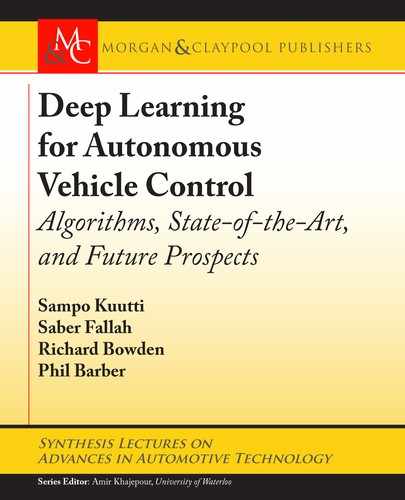3.3. SUMMARY 29
modifications to existing techniques, must be found to address this drawback of deep learning
models [139, 160]. For these reasons, we will explore issues in safety validation of deep neural
networks and possible solutions in the next chapter.
3.3 SUMMARY
A review of state-of-the-art techniques in autonomous vehicle control via deep learning was
given in this chapter. e review was broken into three sections: lateral, longitudinal, and full
vehicle control. Currently, the trend in lateral control algorithms has been to use supervised
learning from images, while longitudinal control algorithms tend to favor using reinforcement
learning from lower dimensional states. On the other hand, in full vehicle control, a wide va-
riety of techniques have been proposed. Impressive results have been achieved in this field, and
research is beginning to move away from learning simple driving tasks, to learning to drive us-
ing high-level context while also considering low-level objectives. e main research issues for
the future prospects of the field were discussed, and potential solutions were introduced. e
most critical research challenge, safety and interpretability of DNNs, was identified and will be
explored further in the next chapter.
..................Content has been hidden....................
You can't read the all page of ebook, please click here login for view all page.
